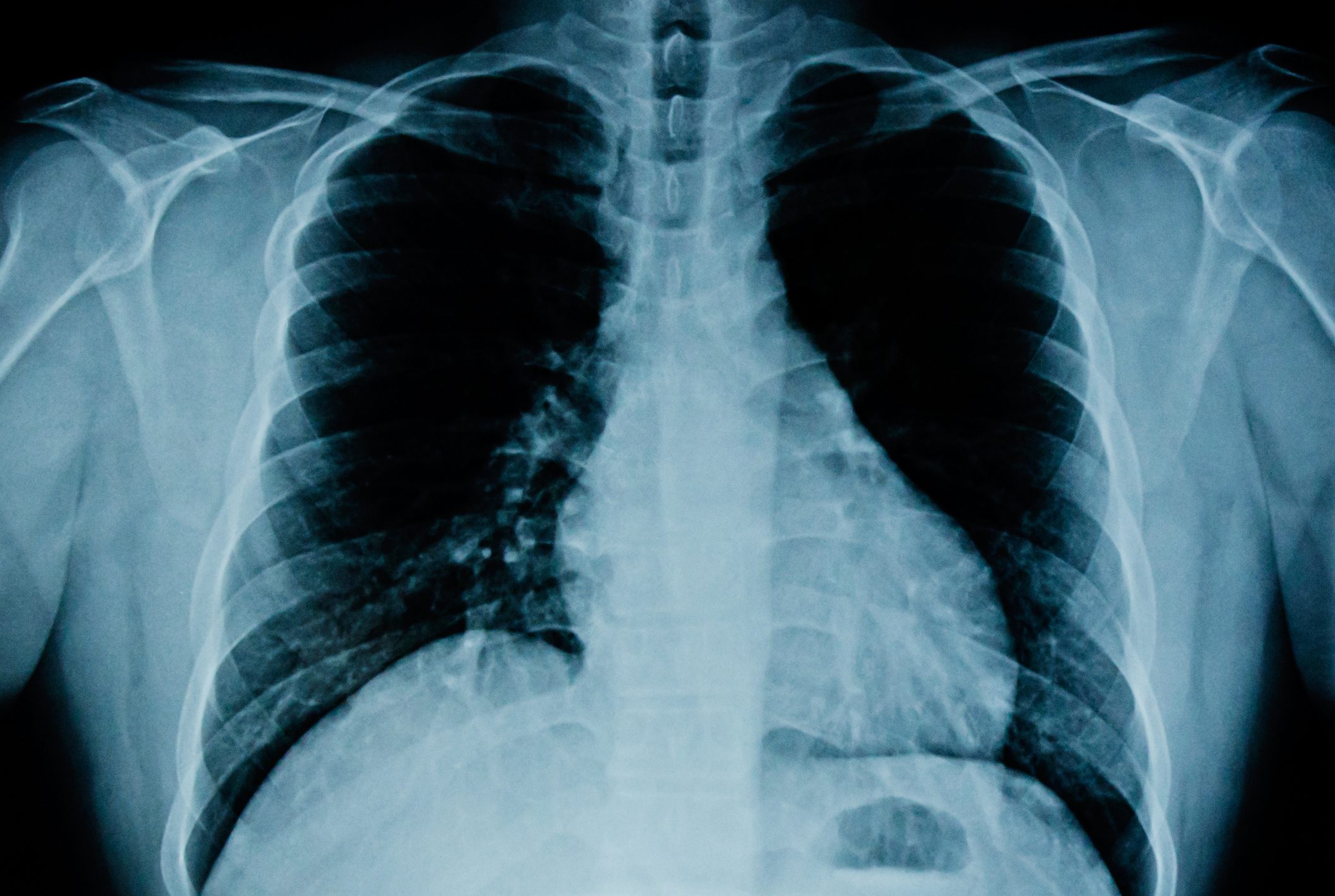Some patients with interstitial lung disease (ILD) have a fibrotic phenotype. Some of these patients respond – at least in the short term – to therapy. In some cases, however, the disease continues to progress despite treatment. What is the appropriate option under which circumstances has been formulated in new guidelines.
Various approaches are available for the management and treatment of patients with progressive pulmonary fibrosis (PPF), ranging from watchful waiting to immunomodulatory and anti-fibrotic pharmacological treatments through to palliative care and lung transplantation. In many cases, there is only limited evidence for the individual options, which is not the only reason why patients and practitioners often face major challenges with PPF. New joint guidelines from the American Thoracic Society (ATS), European Respiratory Society (ERS), Asociación Latinoamericana de Tórax (ALAT) and Japanese Respiratory Society (JRS) are intended to provide guidance, “but in the end there are usually more questions than answers in individual cases,” stated Prof. Dr. Elisabeth Bendstrup, Center for Rare Lung Diseases, Aarhus University Hospital [1].
In a patient with ILD of known or unknown etiology (other than IPF) who has radiographic evidence of pulmonary fibrosis, PPF is defined according to the ATS/ERS/ALAT/JRS guidelines [2] as at least two of the following three criteria occurring within the last year with no alternative explanation:
- Worsening of respiratory symptoms
- Physiological evidence of disease progression (one of the following criteria):
a) absolute decrease in FVC ≥5% predicted at a follow-up period of 1 year
b) absolute decrease inDLCO (corrected for Hb ≥10% predicted with 1 year follow-up)
3. radiologic evidence of disease progression (one or more of the following conditions):
a) Increasing extent or severity of traction bronchiectasis and bronchiolectasis
b) New ground-glass opacity with traction bronchiectasis
c) New fine mesh formation
d) Enlargement or coarsening of the reticular anomaly
e) New or reinforced honeycomb formation
f) Increased lobar volume loss
The decision as to when treatment should be initiated should be made jointly by the doctor and patient, explained Prof. Bendstrup. As a clinician, however, it is important to consider factors such as the symptom burden, the severity of the deterioration in lung function, radiological features, other signs of alveolar inflammation, risk factors for disease progression, quality of life and, of course, the history of progression before the patient presents. All of this should ideally be discussed in a multidisciplinary team consisting of pulmonologists, respiratory physiologists, pathologists, rheumatologists, radiologists, specialist nurses, physiotherapists and occupational therapists. According to the expert, the aforementioned points must be re-examined during the follow-up examination with regard to progression.
Individual treatment recommendation from patient to patient
The guidelines state that nintedanib is recommended for the treatment of PPF in patients who have failed standard treatment (conditional recommendation, low-quality evidence). But what is meant by standard treatment?
“This will differ from patient to patient,” says Prof. Bendstrup. “For many, it will be immunosuppressive therapy in an attempt to stabilize or reverse the initial disease. For other patients, however, standard treatment may consist of antigen remediation or observation. In addition, it should be recognized that for many ILDs there are no evidence-based guidelines for standard of care treatment.”
For the treatment and management of PPF, the pulmonologist recommends a holistic approach that goes beyond purely pharmacological treatment. The aim is to support the patient in
- the relief of symptoms
- its education and enlightenment
- Vaccination
- Smoking cessation
- Caring relatives/social network
- psychological support
- additional oxygen
- pulmonary rehabilitation
- Care at the end of life
On the question of anti-inflammatory or anti-fibrotic therapy, the Danish expert referred to a position paper in which it was stated in 2020 that antifibrotics should be used directly in IPF, while antigen identification and removal is called for in chronic hypersensitive pneumonitis (HP) [3]. If immunomodulatory treatment or observation is considered, glucocorticoids are the first choice, DMARDs are the second choice, and finally antifibrotics are also an option if the disease progresses (Fig. 1).
Immunomodulation as standard
As shown in Figure 1, immunomodulation is the traditional treatment for most autoimmune ILD, although there are few randomized controlled trials (RTCs). With the exception of SSc-ILD, glucocorticoids are a cornerstone of treatment. According to the guidelines, mycophenolate mofetil and cyclophosphamide are the first pharmacological treatment options available for SSc-ILD. Tocilizumab also has a place in the early phase of the disease. Nintedanib was then to be used in the further course of SSc-ILD. In the SENSCIS study, there was a clear signal of less progression in patients treated with nintedanib, recalled Prof. Bendstrup. Alternatively, pharmacotherapy can also be dispensed with in some patients; instead, this group must first be closely monitored.
Monitoring of disease progression is mainly based on serial lung function tests (with progression characterized by a steady decrease in FVC), which are often combined with one or more of the following tests: Measurement of the diffusion capacity of the lungs for carbon monoxide (DLCO), assessment of symptoms and physical performance, CT findings (whereby an increase in the extent of fibrosis indicates progression of the disease), measurement of oxygen saturation during physical exertion and the need for additional oxygen.
If there is an inadequate response to treatment or disease progression, consideration should be given to escalating the therapy:
- Change in dose or choice of pharmacologic treatment; consider mycophenolate mofetil, cyclophosphamide, nintedanib; rituximab.
- consider lung transplantation.
- Consider autologous hematopoietic stem cell transplantation in selected patients.
Little evidence for RA-ILD
In RA-ILD (rheumatoid arthritis with interstitial lung disease), there is much less evidence regarding immunomodulation and antifibrotics, explained Prof. Bendstrup. A retrospective cohort study (n=78) showed that survival improved significantly in patients treated with methotrexate (MTX) (<0.0005). A recent study looking at the progression of lung function showed that methotrexate, azathioprine or rituximab all lead to a change in lung function with a deterioration in the stabilization of FVC andDLCO. And another study on antifibrotic treatment with pirfenidone in patients with RA-ILD was recently negative and was terminated prematurely because patient recruitment was unsuccessful. But in the post-hoc analysis looking at patients with RA-UIP, this was again a clear signal that antifibrotic treatment with pirfenidone appears to slow disease progression. Further research is needed here in the future to be able to draw a clearer picture.
Take-Home Messages
A new guideline definition of progressive pulmonary fibrosis has been established.
The treatment of patients with PPF should be assessed individually for each patient, taking into account
- clinical findings, risk factors and values of the patient
- based on MDT discussion
- with decisions made jointly by patient and doctor
Although it is widely used and recommended, there is limited evidence for immunomodulation in fibrotic ILD (exception: SSc-ILD).
ATS/ERS/ALAT/JRS Guidelines:
- Conditional recommendation for the treatment of PPF with nintedanib in patients who have failed standard treatment for fibrotic ILD
- Further research on pirfenidone at PPF recommended.
Sources:
- Session “Progressive pulmonary fibrosis: challenges and controversies”; Lecture: “Therapeutic approach and challenges in PPF”; ERS Congress 2023, Milan, 10.09.2023.
- Raghu G, Remy-Jardin M, Richeldi, et al: Idiopathic Pulmonary Fibrosis (an Update) and Progressive Pulmonary Fibrosis in Adults: An Official ATS/ERS/JRS/ALAT Clinical Practice Guideline. AJRCCM 2022; 205; doi: 10.1164/rccm.202202-0399ST.
- Wijsenbeek M, Cottin V.: Spectrum of Fibrotic Lung Diseases. N Engl J Med 2020; 383: 958-968; doi: 10.1056/NEJMra2005230.
InFo PNEUMOLOGIE & ALLERGOLOGIE 2023; 5(4): 30-31 (published on 8.11.23, ahead of print)













